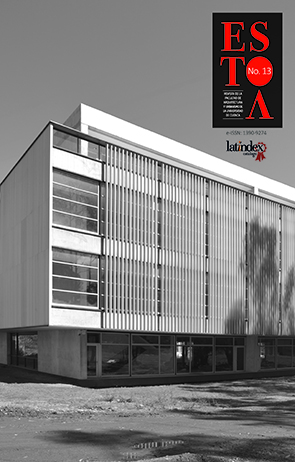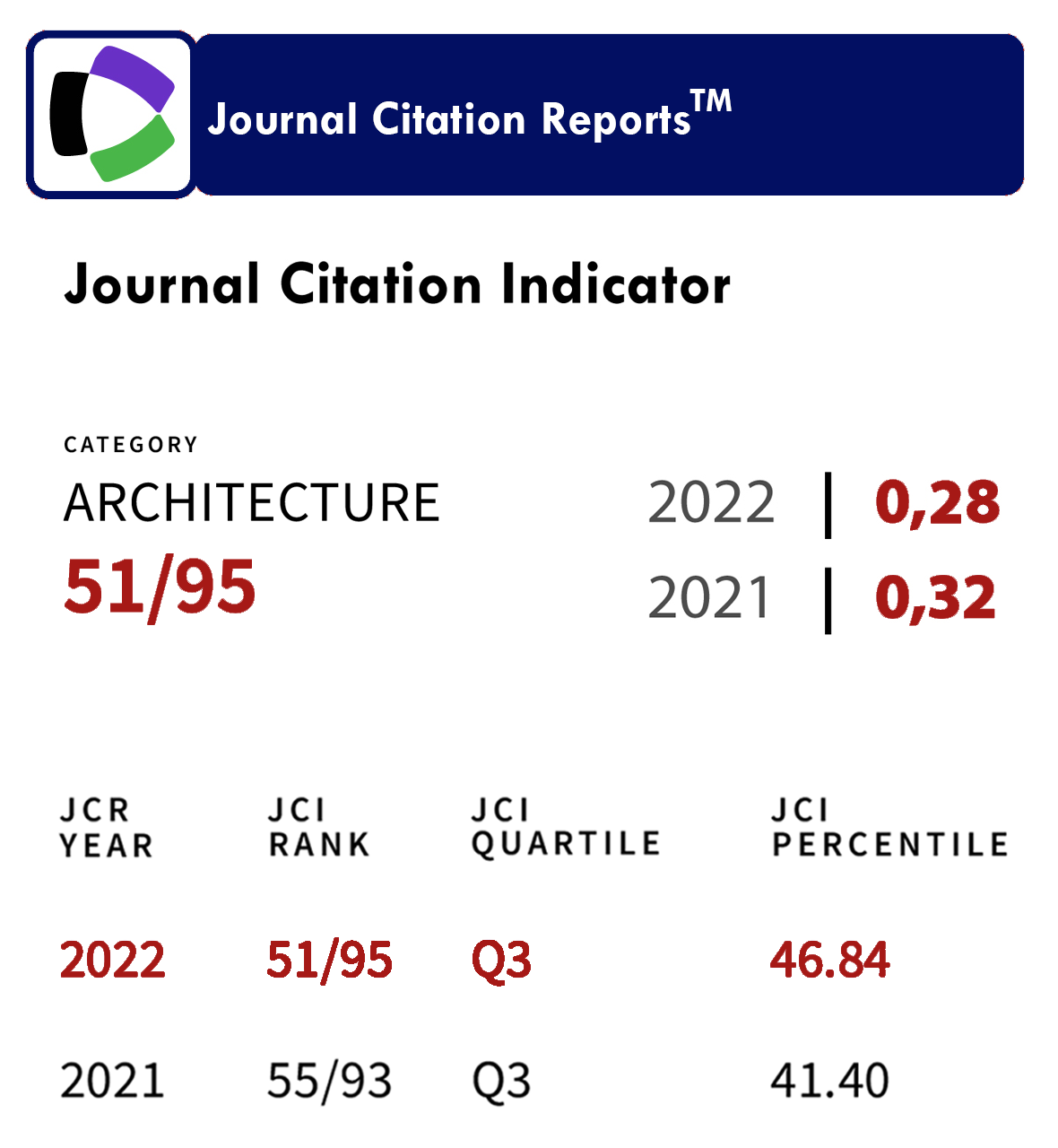The light well as element of luminous control inside the architectural spaces, case of study: Batlló House
DOI:
https://doi.org/10.18537/est.v007.n013.a11Keywords:
luminance, daylight factor, natural light, Light well, reflectancesAbstract
This work took as a case study a specific light well. The Casa Batlló, work of the architect Antoni Gaudí, was subjected to a light simulation, where the percentages of daylight of each floor were obtained from the areas that are adjacent to the light well. Additionally, four case studies were modeled for their respective analysis in which the different percentages obtained in the simulation are compared and the different variables of each case are analyzed. Although the Casa Batlló handles the use of color on the surfaces surrounding the patio, the variable of modifying the size of the windows is also used. With this Gaudí tried to compensate for the power of daylight that exists on the floors superiors, unifying the concept of window size and color treatment on surfaces. The main objective of this work is to know what influence more for the entrance of natural light, if the use of highly reflective colors on the surfaces of the courtyards or to vary the size of the windows. The conclusion is that color influences more effectively the entry of natural light with a 1.4% difference in FLD with the window size variable.
Downloads
References
Bassegoda i Nonell, J. (2012). Gaudí : luz y color = Casa Batlló. Barcelona , España: Triangle Postals
Campo Baeza, A. (1996). La idea construida: la arquitectura a la luz de las palabras. Madrid, España: Colegio Oficial de Arquitectos de Madrid.
Charles, K. E., y Veitch, J. A. (2002). Environmental satisfaction in open-plan environments: 2. Effects of workstation size, partition height and windows. Institute for Reserch in Construction. National Reserch Council Canadá. Internal Report No. IRC-IR-845 . Recuperado de https://nparc.nrc-cnrc.gc.ca/eng/view/fulltext/?id=4657e77a-7084-482a-b02e-16e9c21f0fce
Evans, J. M., Bogatto, M., Eguía, S., y Baroldi, G. (1999). Uso de modelos a escala en el cielo artificial. Características de reflexión de los acabados superficiales interiores y exteriores. Revista Avances en Energías Renovables y Medio Ambiente. Salta, Argentina, 3, 8–169.
Florensa, R. S., y Roura, H. C. (2001). Arquitectura y energía natural. Barcelona, España: Universidad Politécnica de Catalunya.
Giménez, V. B., Cabanes, N. C., Antón, A. M., y Villa, R. M. P. (2011). Luminotecnia: Magnitudes Fotométricas básicas. Unidades de medida. Valencia, España: Universidad Politécnica de Valencia.
CEI-IDAE (2005). Guía técnica para el aprovechamiento de la luz natural en la iluminación de edificios. Madrid, España: Instituto para la Diversificación y Ahorro de la Energía (IDEA).
Kensek, K., y Suk, J. Y. (2011). Daylight Factor (overcast sky) versus Daylight Availability (clear sky) in Computer-based Daylighting Simulations. Journal of Creative Sustainable Architecture & Built Environment, 1, 3–14.
Laszlo, C. (2008). Manual de Luminotecnia para interiores. Madrid, España. Recuperado de http://www.iar.unicamp.br/lab/luz/ld/Arquitetural/manuais/manual_de_luminotecnia_carlos_laszlo.pdf
Vásquez, C. (2010). La luz en la obra de Le Corbusier. ARQ (Santiago), (76), 20–27.
Yildirim, K., Akalin-Baskaya, A., y Celebi, M. (2007). The effects of window proximity, partition height, and gender on perceptions of open-plan offices. Journal of Environmental Psychology, 27(2), 154–165.
Published
How to Cite
Issue
Section
License
The Journal declines any responsibility for possible conflicts derived from the authorship of the works that are published in it.
The University of Cuenca in Ecuador conserves the patrimonial rights (copyright) of the published works and will favor the reuse of the same ones, these can be: copy, use, diffuse, transmit and expose publicly.
Unless otherwise indicated, all contents of the electronic edition are distributed under a Creative Commons Attribution-NonCommercial-ShareAlike 4.0 International License.






